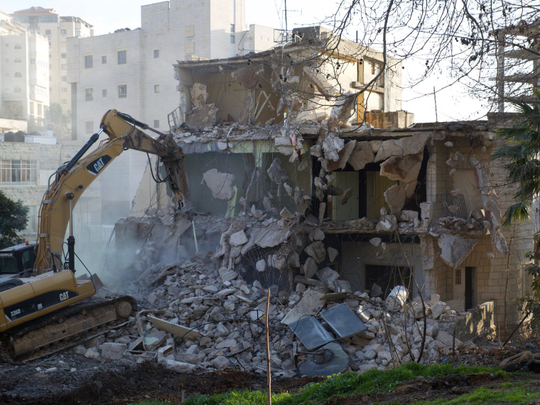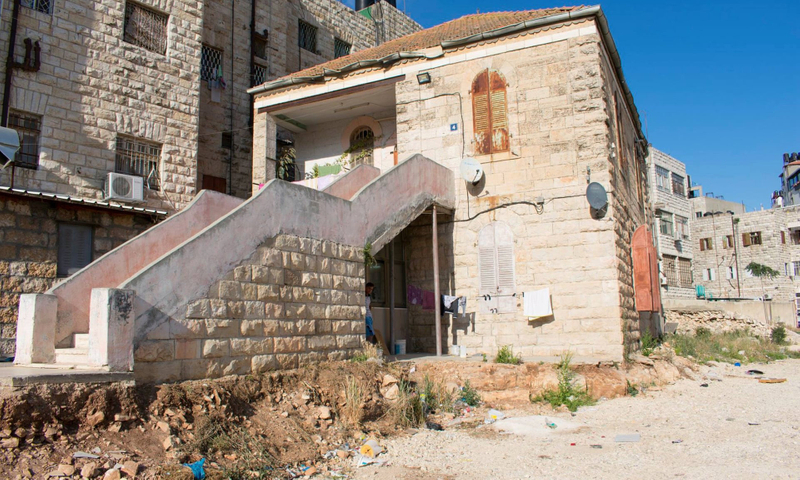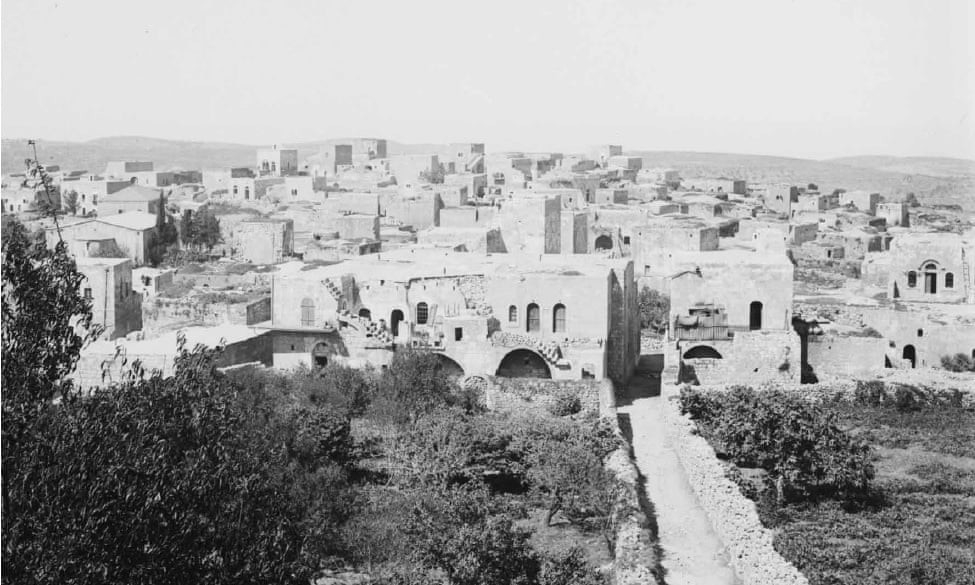
Ramallah: Walk down the streets of Ramallah on any given weekday, and the call to prayer from the city’s mosques is likely to be drowned out by the sound of construction, while dust from newly dug foundations always seems to find its way into homes.
The de-facto “capital” of Palestine - situated an hour north of occupied Jerusalem - is experiencing a construction boom bigger than in any other city in the West Bank.
Ramallah’s location plays a big part in its real estate prices, but the lack of progress in peace negotiations between the Israeli regime and Palestine has given them a further boost.

“With the hopes of [occupied] Jerusalem becoming our capital dwindling to maybe zero, a lot more people are interested in investing now in Ramallah,” says Sahar Qawasmi, co-founder and director of Sakiya , a residency programme for art, science and agriculture.
But the building of new apartment blocks and glitzy shopping malls comes at a cost. According to local architects, a quarter of a century ago Ramallah boasted 832 historical houses. Only 380 still stand.
Demolished
Dar Harb was the most recently demolished.
It was razed in August and will soon be replaced by a new shopping complex called Centro Mall, which will sell international brands and offer entertainment.
You can be walking down the street and ... you feel like you lost something all of a sudden. Sometimes you don’t even remember what the building looked like, but the effect on the human psyche is great.
Yousef Dartaha, who works at Riwaq to preserve and restore architectural heritage sites, believes it was once the annex of the Grand Hotel. Built in 1924, Dar Harb was said to be the preferred place for King Hussain of Jordan to stay when he visited Palestine.
“In the case of Dar Harb, they could easily have kept the [facade] and ... integrated it into this [Centro Mall] complex, without touching the authenticity of the building,” Dartaha says. “You then keep the history and you use it for a modern function and the purpose you want.”
Before Dar Harb was demolished, architects like Dartaha and Qawasmi banded together with local activists to protest at the site. They failed to sway the municipality, though, which issued developers with the necessary permits. The building was knocked down during the night without any witnesses.

To Qawasmi, the demolition of historical buildings to make way for new developments is “traumatic”. “You can be walking down the street and ... you feel like you lost something all of a sudden. Sometimes you don’t even remember what the building looked like, but the effect on the human psyche is great.”
“If the city was to talk it [would say it doesn’t] even recognise itself, it has had so many facelifts.”
Her point is echoed by Mohammad Abu Hammad, an architect at Unesco’s National Office for Palestine, who adds: “Stories of the city are the stories of its residents, the old and the new ones, which are told because of the existing physical evidence. Once disappeared, stories will turn into myths.”
Current law in Palestine protects all buildings constructed before 1917. For any structure built later, the minister of antiquities in Palestine would need to step in to save it. Post-1917 buildings would need cultural, economic or natural significance to be considered for protection.
But the decades after that cutoff point produced some of the richest architecture in Ramallah. British rule between 1920 and 1948 saw the first use of concrete foundations, flat roofs and high beams in the city. Modernism arrived with Palestinian people who fled the coastal cities of Jaffa, Lid and Haifa and with the creation of the state of Israel in 1948.

Ramallah’s heritage becomes even more important given the Palestinian National Authority has no say over Palestinian cultural heritage in occupied Jerusalem.
Bylaw to protect old structures
Ramallah’s mayor, Mousa Hadid, says the city is working on a bylaw to better protect buildings by categorising each element of old structures with more precision.
But juggling the desires of owners who wish to sell at the same time as protecting heritage is always likely to provoke conflict, he says.
Hadid highlights one case where the municipality paid $2 million to buy and protect Beit Jagb - a 1920s British occupation-era house which the owner had wanted to sell for development - but he says that was an exception.
“If the municipality is going to buy every house ... then [we] would not be able to [finance] the services for all the citizens in the city. It’s not our main responsibility,” he adds.
Centro Mall, replacing the site of Dar Harb, is a $100 million joint project of real estate investors Royal Group and Nabali & Al Faris. Royal Group’s general manager, Rana Dosoqi, says Dar Harb was built after 1917, and so was not protected by Palestinian law.
“If the municipality thought it was an important house, we wouldn’t have gone for it,” she adds.
(c) Guardian News & Media Ltd, 2018












